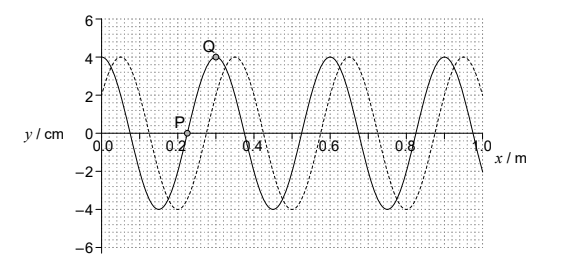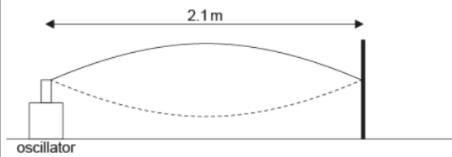IB PHYSICS HL(Higher level) – 2024 – Practice Questions- All Topics
Topic 4.2 Travelling waves
Topic 4 Weightage : 5 %
All Questions for Topic 4.2 –Travelling waves , Wavelength, frequency, period and wave speed , Transverse and longitudinal waves , The nature of electromagnetic waves , The nature of sound waves
Question
The solid line in the graph shows the variation with distance x of the displacement y of a travelling wave at t = 0. The dotted line shows the wave 0.20 ms later. The period of the wave is longer than 0.20 ms.

(a) (i) Calculate, in m s–1, the speed for this wave. [1]
(ii) Calculate, in Hz, the frequency for this wave. [2]
(b) The graph also shows the displacement of two particles, P and Q, in the medium at t = 0. State and explain which particle has the larger magnitude of acceleration at t = 0. [2]
(c) One end of a string is attached to an oscillator and the other is fixed to a wall. When the frequency of the oscillator is 360 Hz the standing wave shown is formed on the string.

Point X (not shown) is a point on the string at a distance of 10 cm from the oscillator.
(i) State the number of all other points on the string that have the same amplitude and phase as X. [1]
(ii )The frequency of the oscillator is reduced to 120 Hz. On the diagram, draw the standing wave that will be formed on the string. [1]

▶️Answer/Explanation
Ans:
a i v= « \(\frac{0.05}{0.20\times 10^{-3}}\) = » 250 «ms-1»
a ii λ = 0.30 «m » f = « \(\frac{250}{0.30}\) = » 830 «Hz»
b Q acceleration is proportional to displacement «and Q has larger displacement»
c i 3 «points»
c ii first harmonic mode drawn

